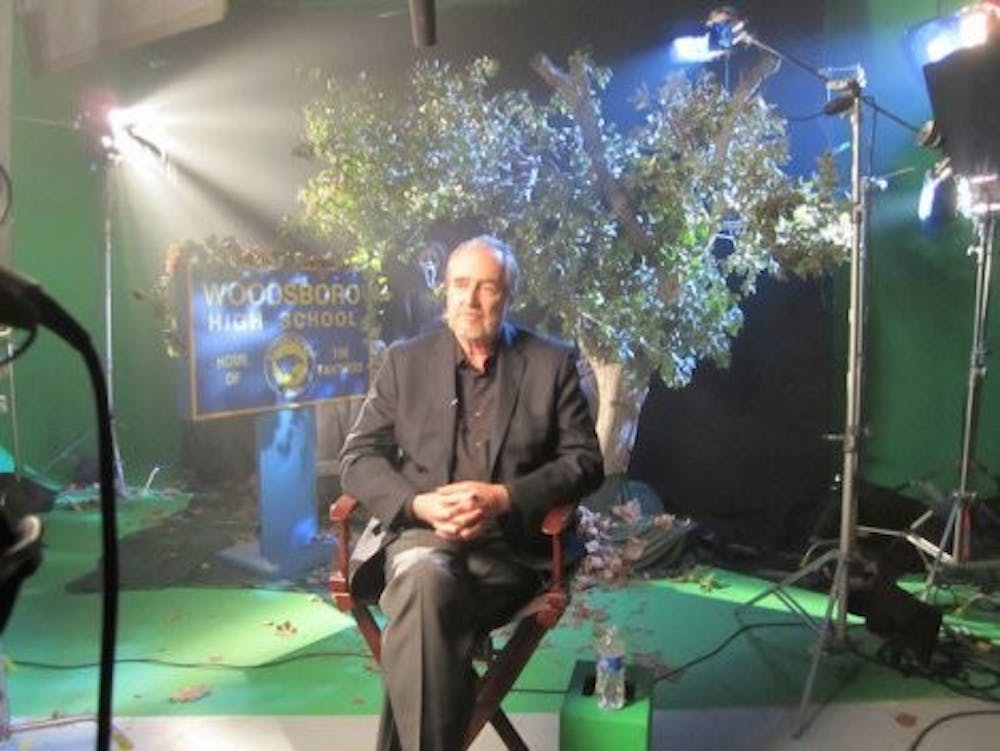By AMANDA AUBLE and SARAH SCHREIB
Arts & Entertainment Editors
Horror film writer-director and Hopkins graduate Wes Craven died Sunday, Aug. 30 in Los Angeles after battling brain cancer. He was 76.
An innovator for the modern-day scary movie, Craven masterminded both successful slasher film franchises A Nightmare on Elm Street (1984) and Scream (1996).
Before terrifying audiences across the nation, Craven took his writing studies to Baltimore and earned his master’s degree from the Johns Hopkins Writing Seminars Program in 1964.
The Sheridan Libraries’ Special Collections & Archives still maintains Craven’s graduate thesis titled, “Noah’s Ark: Journals of a Madman,” which he submitted to the Faculty of Philosophy as part of the Writing Seminars program. Four hundred eight pages long, the work is essentially a horror novel written in journal entry style from the perspective of a madman who lives in an old cathedral tower.
Although not yet pursuing a career in the film industry, Craven’s creative fiction produced at Hopkins demonstrated his skills within the horror genre. In an interview with The Baltimore Sun in 2011, Craven described the experience of showing his work to Elliott Coleman, the founder of the department of writing, speech and drama at Hopkins.
“I wrote a novel called ‘Noah’s Ark: Journals of a Madman,’ as my thesis, which was one of the options you had. After Elliott read it, he said to me and to the class, ‘You know, this would make a terrific movie. It’s so visual,” Craven said.
The highly visual element within Craven’s culminating work at Hopkins hints at the type of art he would one day produce. While his films famously include graphic scenes involving human beings, his novel often utilizes dark, often gruesome animal imagery and metaphors.
A prime example of this is in the description of his main character’s anxiety.
“At this moment I was beginning to feel a spider of nausea creeping towards my heart, hatched from a question I did not even want to ask,” he wrote.
After touching on themes of mental illness and death, the work ends with a brief afterword in which Craven expands on the difficulties and delusions of writing and reading fiction — and just life in general.
“For you see, there is nothing to know, only everything to believe — just as you believe in your own existence if you wish, or dispute it, if you do not wish,” he writes. “Feel free to question your own breathing, it is a thing of intuition, given to be believed or doubted.”
This idea of blurring reality and imagination also holds true in many of Craven’s works to follow.
It is especially the case for his iconic character Freddy Krueger, a razor-blade-wielding villain from A Nightmare on Elm Street who stalks his victims in their dreams, but kills them in reality. Despite the movie’s low budget, it was an instant commercial success and has spawned nine preceding films.
Craven did not stay on the academic path for long after his Hopkins graduation. He taught briefly as an English and humanities professor at Westminster College and Clarkson University, but soon entered the film industry, writing and directing adult films under pseudonyms.
In 1972, Craven made his first feature film debut writing and directing The Last House on the Left. Telling the story of two teenaged girls and their unexpected encounter with a gang of serial killing thugs, The Last House on the Left demonstrates the theme of teenaged rebellion eventually leading to perilous, life-threatening situations.
Craven’s other directorial credits include The Hills Have Eyes (1977), Red Eye (2005) and My Soul to Take (2010).





